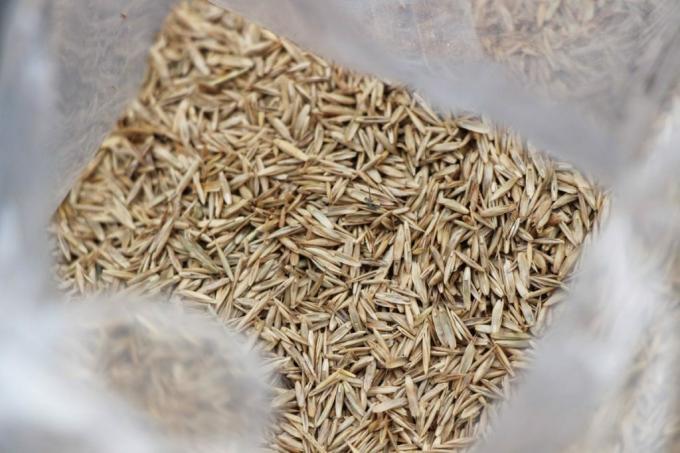
table of contents
- distribution
- Recognize hawkweed
- Remove individual plants
- Widespread combat
- frequently asked Questions
Hawkweed is an old medicinal plant, but it can also be found on one race makes wide. Since it displaces the grass plants more and more over time, fighting it is worth considering.
In a nutshell
- Hawkweed an ancient medicinal plant
- reproduces both via seeds and roots
- can spread over the entire lawn
- Seeds after flowering like a dandelion
- The plant must be removed WITH the root
distribution
The medicinal herb, which can be very annoying in the garden, can multiply in two different ways. This is why it is so dangerous for a well-manicured lawn:
By seeds
- are spread by wind
- seeds similar to those of the dandelion
About the taproot
- once grown, roots spread out in all directions
- The mother plant produces more and more new children
- these become mother plants themselves
Tip: If you have a cottage garden Flower meadow then you can leave the weeds standing and only thin them out every year so that they do not spread over large areas. Because the plant belongs to the bee pastures and is therefore popular in a natural garden.
Recognize hawkweed
In order to know whether it is actually hawkweed, it is important to recognize it on the lawn or in other garden beds:

- hairy, rounded leaves
- orange or yellow flowers
- remind of dandelions
- many different types
- in gardens mostly the hawkweed
- feels good on acidic and nutrient-poor soils
Tip: The best prevention against the herb is to always take good care of your lawn, apply the appropriate fertilizer, and regularly clean the grass with one Scarifier vent. This means that the seeds that are swirling in the air have no chance of getting stuck and plants that have already become stuck are removed.
Remove individual plants
If the medicinal herb is recognized in the lawn, action should be taken immediately before the plants settle in the meadow and spread:
- remove individual plants immediately
- Use the weed cutter
- alternatively, pierce deep into the earth with a knife
- Lever out weeds from below
- remove with a long root
- dispose of on compost
- only if flowers have not yet formed seeds
- in the event of seed formation in the closed bag in the residual waste

Note: Preventing growth in the grass is hardly possible. Because if your garden is close to meadows and paths, the white seeds will find their way onto your meadow by themselves and can settle here. Because these are widely scattered by the wind, like with dandelions.
Widespread combat
If the growth of the weeds in the lawn was recognized very late, the entire area is quickly affected. Cutting out the plants here one by one would be too much work:
- Change soil conditions
- Hawkweed prefers acidic, sandy soil without humus
- Adjust nutrient balance
- The pH value can be determined with a test from the trade
- pH between 5.5 and 6.5 is ideal
- if the value is too low Apply suitable fertilizer
- scarify the lawn in addition
- Apply new lawn seeds to bare spots

Note: If nothing helps and the weeds continue to sprout, you can only recreate the entire area so that you can get rid of the weeds in the long term. To do this, remove the entire turf, apply new soil and sow again.
frequently asked Questions
You don't have to worry about anything here, the herb is completely non-toxic, it is even a medicinal plant that was used very often in earlier years.
Of course, it is possible for you to cultivate the herb as well. Because this is an excellent bee pasture. The weeds are therefore suitable for fastening a slope, because the tap roots prevent the earth from sliding off again as quickly here. It can also be cultivated in a tub, which prevents undesired spreading via the roots. There are cultivars that have a sterile flower.
Unfortunately, if you want to get rid of the hawkweed, just mowing the lawn is not enough. Because this only removes the above-ground parts of the plant. However, the roots can continue to grow and multiply underground.



